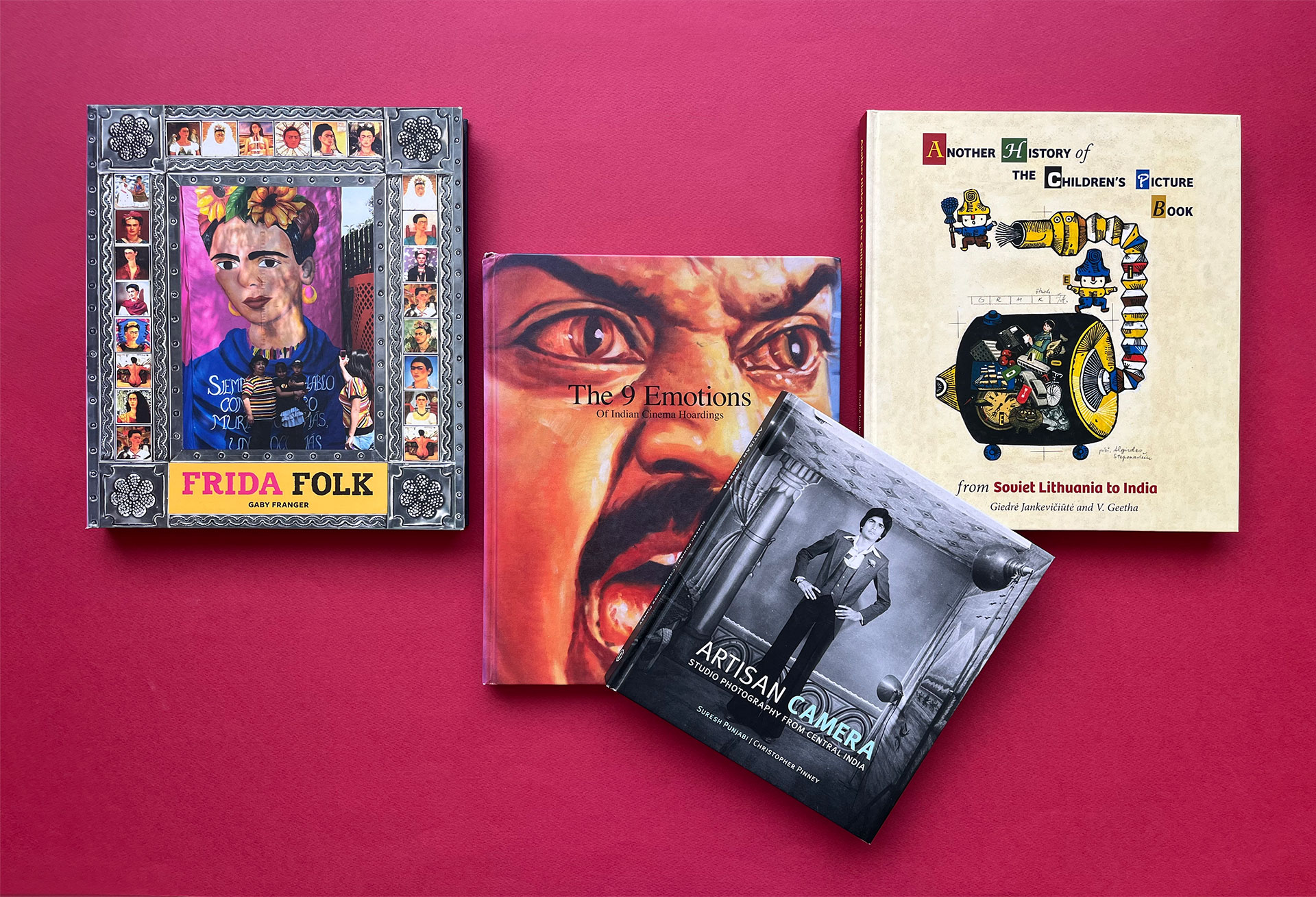
21 Jan Lost and Found: Rediscovering books through their untold stories
By V. Geetha
In 1996, Tara published a book titled The Art of Survival: Fabric Images of Women’s Daily Lives. It featured photographs and essays on quilts, quilting, women quilters and their histories, from across the world. This was our first title in a list that we have since grown intermittently. The list comprises books that address ways of seeing, comprehending and doing art and craft, whether on the streets, in a studio, artisanal workshops, bazaars or in a publishing context.
These books have been around for some years, but they appear ‘lost’ amidst other and better known titles, that is, our picture books for children and adults, books that play with form and handmade books. We thought it would be interesting for our readers if we set about ‘finding’ these provisionally ‘lost’ books—bring them up to the forefront and call attention to their unique features.
So, here are some stories about books that interestingly enough are also about memory: how do we preserve art traditions that are on their way out, how do people remember visual cultures that have shaped their lives, for better and worse… In this sense, this blog is equally about what books do, to keep lost times from being truly forgotten.
The Nine Emotions of Indian Cinema Hoardings
By M.P. Dhakshna, V. Geetha, Sirish Rao
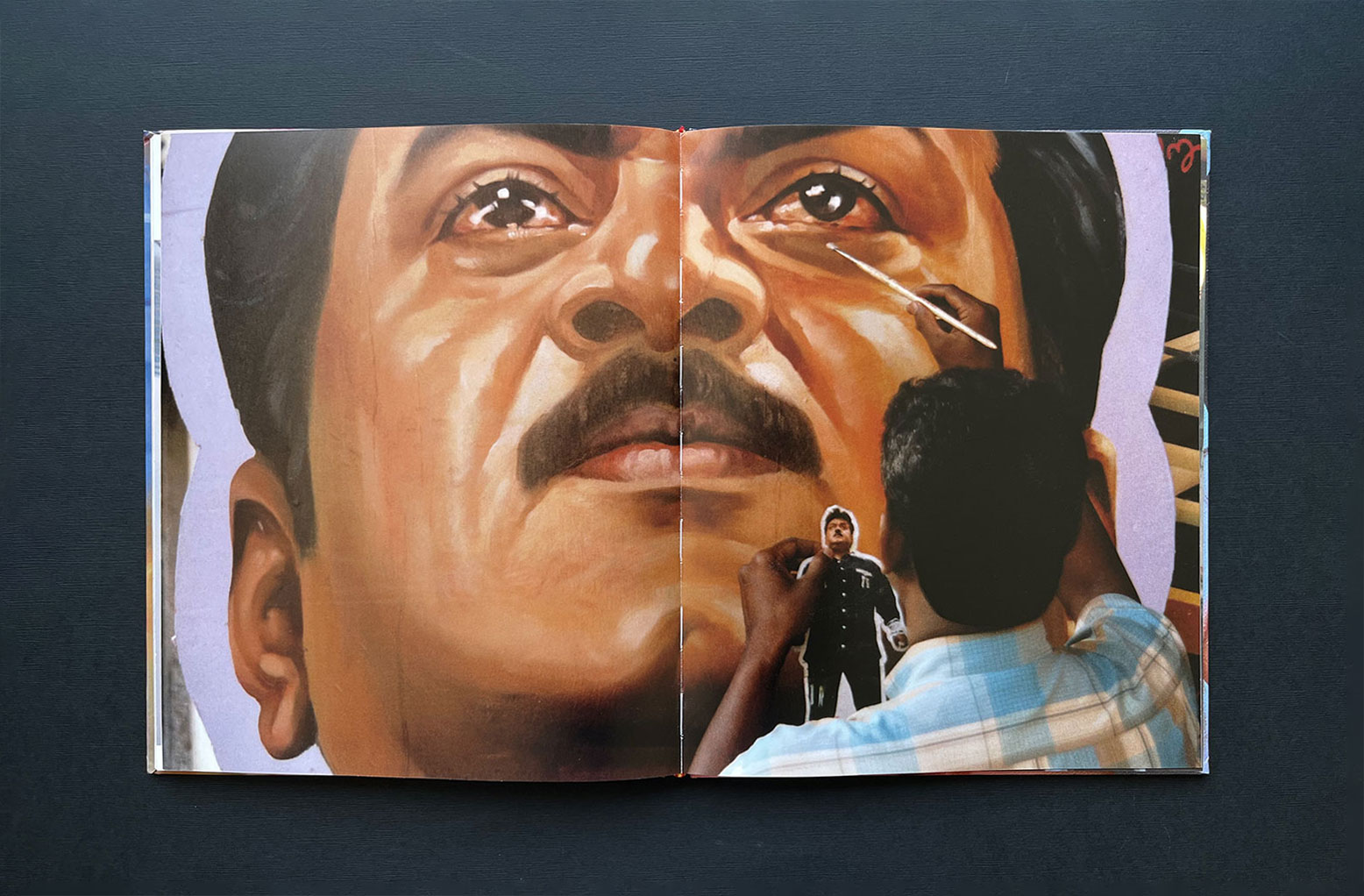
Hoarding artist M.P. Dhakshna paints Vijayakanth
The first ‘lost’ book that we wish to rediscover is The Nine Emotions of Indian Cinema Hoardings. Published in 2007, it grew out of our interest in the art of public display. Typically, a hoarding comprised a large canvas that featured a moment of high drama or action from a given film. Placed on specially erected scaffolds, usually on busy roads or intersections, this piece of canvas dominated that particular urban space. In some cases, in place of a hoarding you had a very tall ‘cutout’ of the star hero, wielding a weapon, or protecting a hapless woman or child, who looked like he had dropped down from the sky.
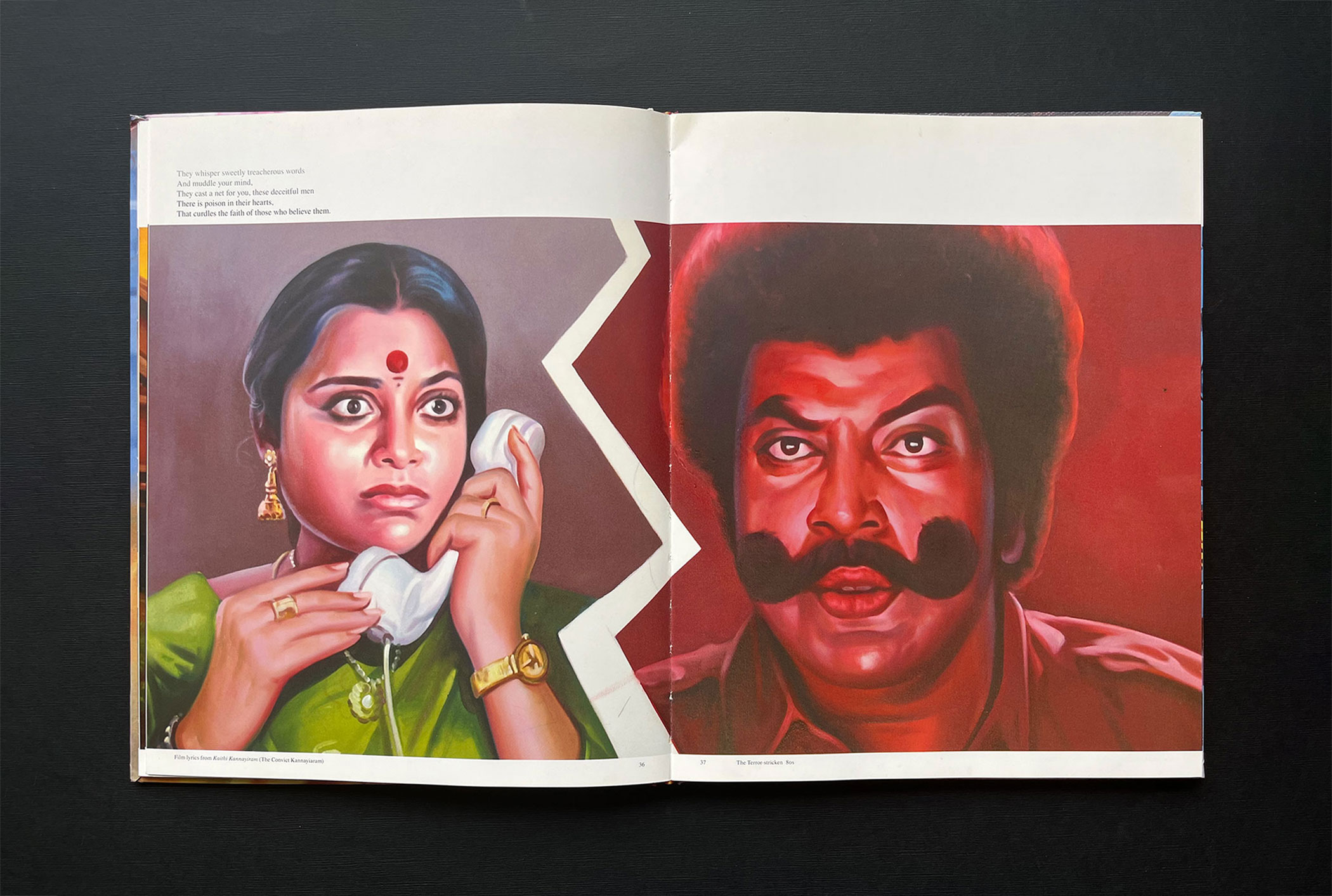
Spread from the book The Nine Emotions of Indian Cinema Hoardings
A chance remark by Gita Wolf that these hoardings convey the nine emotions defined in classical Indian art and aesthetics set us off on an interesting publishing adventure. Why not have artists who painted these hoardings recreate these emotions, based on well-known scenes from popular Tamil cinema? That would make for an unusual book, a paean to street art, and one that documented the process of creating it, in keeping with a visual grammar that had evolved over the years. While the idea was attractive, to execute it proved challenging. The first step was to identify artists who were comfortable as well as convinced of the theme of the 9 emotions. The next was to persuade them to recreate hoardings art for the pages of a book, which meant they had to scale down the spatial dimensions of the work.
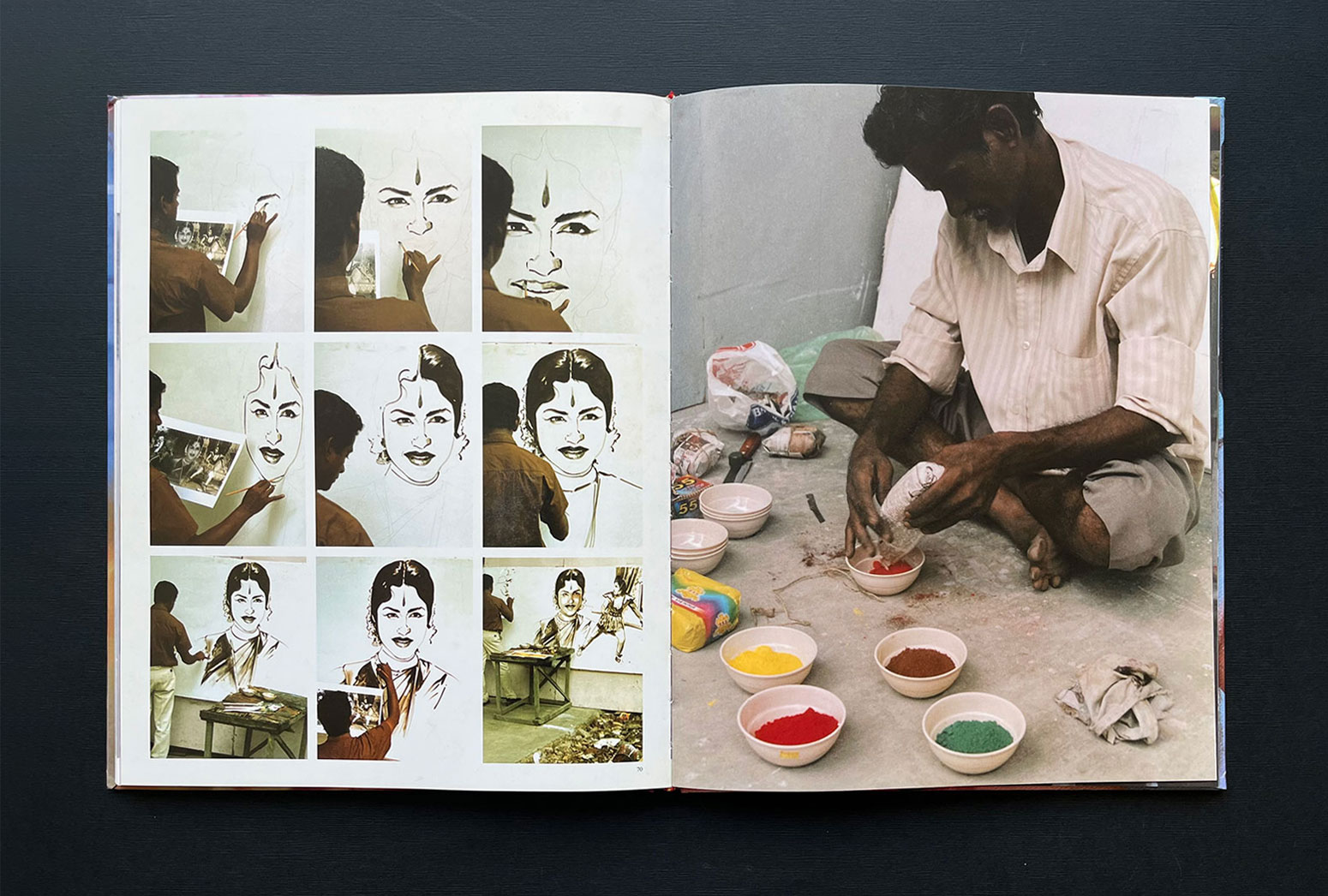
Stages of the hoarding artists’ creative process
The entire exercise took more than a year. The first set of canvases were ready within six months, but an unexpected disaster befell them. Hoardings artists worked out of small studios, and their work invariably spilled out on the streets. And so it was with the artist we chose to work with, M P Dhakshna. Unfinished canvases were stacked against studio walls and some were left to dry on the streets. Unseasonal rain washed the canvases away and he had to begin working on them all over again! But he was unfazed and he and his team went on to complete the project. Meanwhile, we were busy researching the visual history of cinema art, of posters and hoardings, promotional stills and images. We also rifled through film memorabilia, sourced from individual archives, public libraries, interviewed artists on their approaches to painting, their use of line and colour, their understanding of film content, character, emotions…
It proved an unusual collaboration which had us spend hours in the artists’ studio, and being privy to film anecdotes, especially to do with all those who worked behind the scenes to make a film successful. We also got to understand the complex and uneven economics of cinema production.
When done, the book turned out to be the first of its kind: the art that featured in the book was not a replica of posters or hoardings from the past, rather it comprised images that recreated details of the art form for the book. In other words, we called attention to the process of image-making. We also came up with essays based on what artists had told us, which helped contextualise and annotate the art.
Perhaps the book does not quite fit into a given genre or it is perhaps viewed as too particular in its choice of subject. This brief account, we hope, helps place it in context for interested readers.
Artisan Camera
By Suresh Punjabi, Christopher Pinney
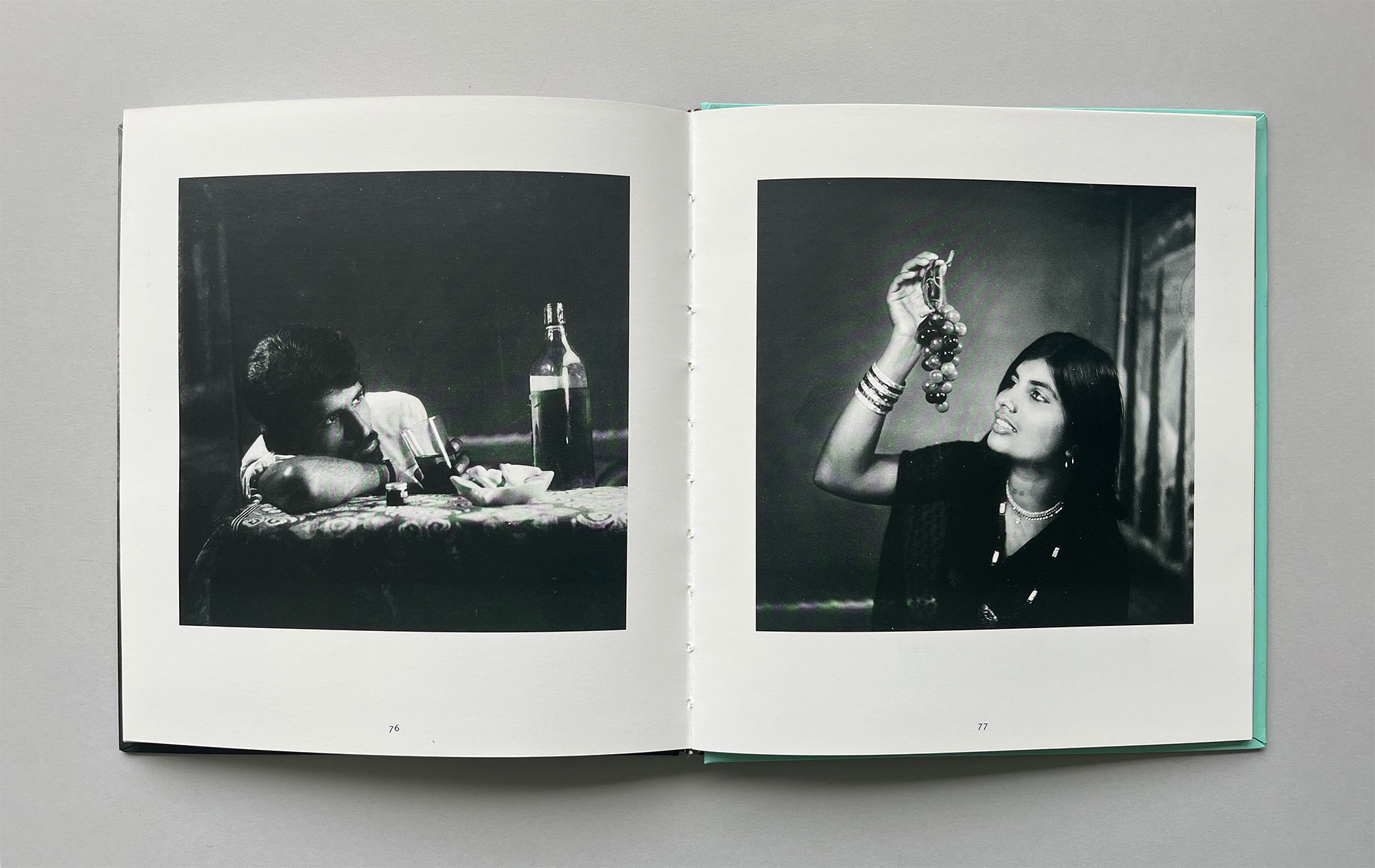
Staging ‘imaginative identities’ at Suresh Punjabi’s Studio Suhag
Another title that features a genre of ‘disappeared’ public art, Artisan Camera is not as well known as it perhaps ought to be. We did this book, in 2013, at the behest of well-known visual anthropologist Christopher Pinney, who approached us with an idea and manuscript. He wanted to put together a set of photographs from a small studio that he had researched previously for his book, Camera Indica. He envisioned the present project as a tribute to a vanished and somewhat quaint visual world. He sent across a large number of pictures, from which we were to choose an optimal set. Pinney had also written a short essay on the photos and on small studios and he wanted this featured along with the photographs.
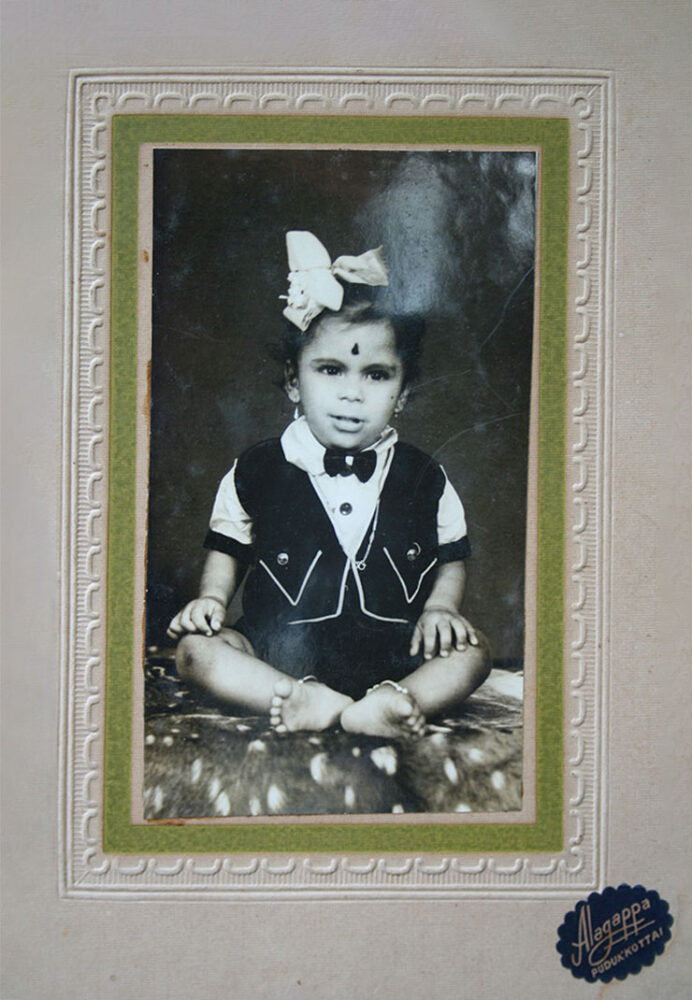
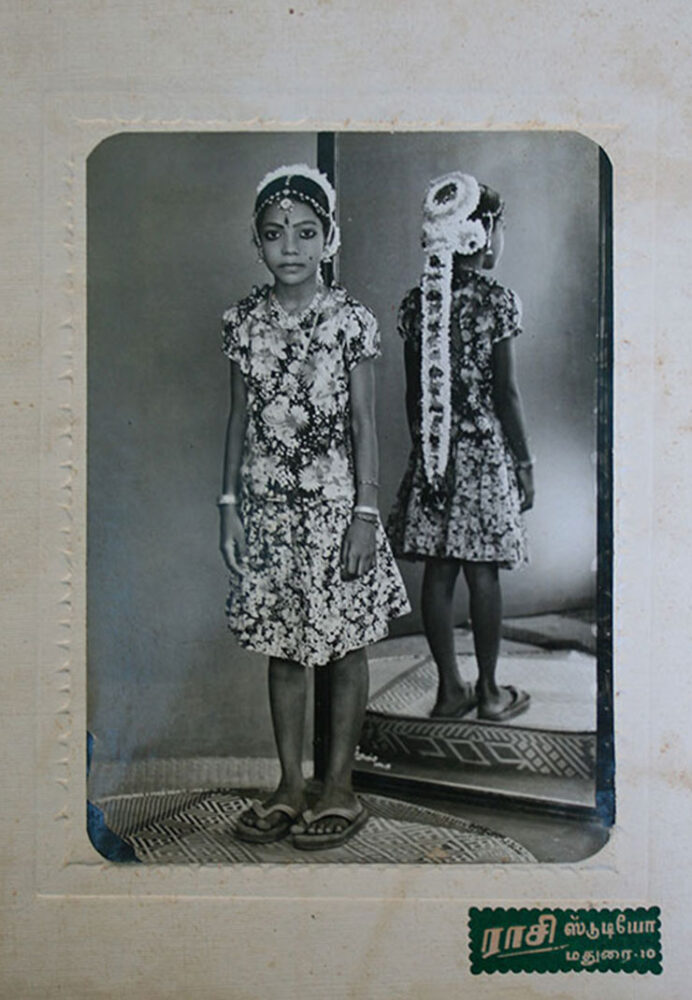
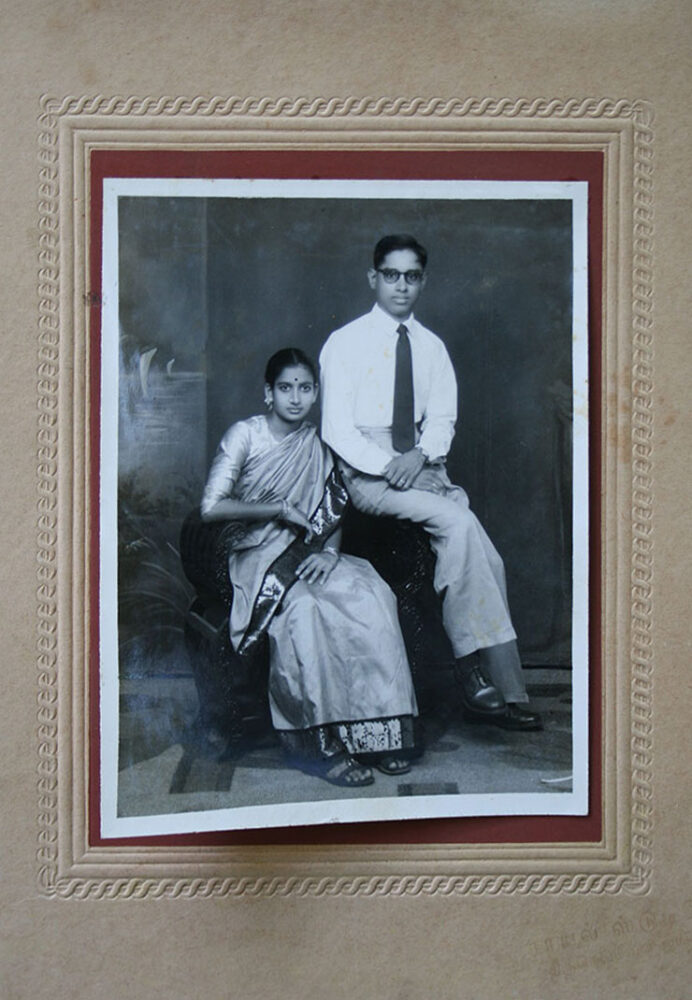
Photographs that show the essential role of studio photography in capturing the ‘key’ moments of a person’s life
At Tara Books, we had our own collection of photos from small studios across Tamil Nadu, which captured rites of passage and ‘key’ moments in the lives of a diverse set of people. We had collected them with the idea of making a book. It seemed to us that an assemblage of these images would make for an unusual visual narrative—of how people sought to record their lives, and how studios provided the setting and the icons for them to do so. It seemed a worthy ‘memory’ project, which recalled times when a camera was a rare object and to be photographed was almost always special. We never did get to do that book, and so when Pinney’s proposal came to us, we thought this would be one way of ‘remembering’ what many of us held to be an important moment in public visual history.
As we worked on the project, we added our own to it. We came up with a second essay which made a case for viewing small studio pictures as examples of artisanal photography: with the photographer in the dark room playing a delicate and essential role in ‘developing’ the image. Much like The Nine Emotions this book is a visual echo of another time. It is not as spectacular but in a quiet way it helps recall lost time.
Two other books that have somewhat got lost are Another History of the Children’s Picture Book: from Soviet Lithuania to India (2017) and Frida Folk (2018). The first was born out of a collaboration with the Lithuanian Cultural Institute and had its origins in an exhibition featuring art from children’s books originally published in Soviet Lithuania. The second was authored by a longtime Frida Kahlo admirer and collector of Frida memorabilia from Germany, Gaby Franger.
Another History of the Children’s Picture Book:
from Soviet Lithuania to India
By Giedrė Jankevičiūtė, V. Geetha
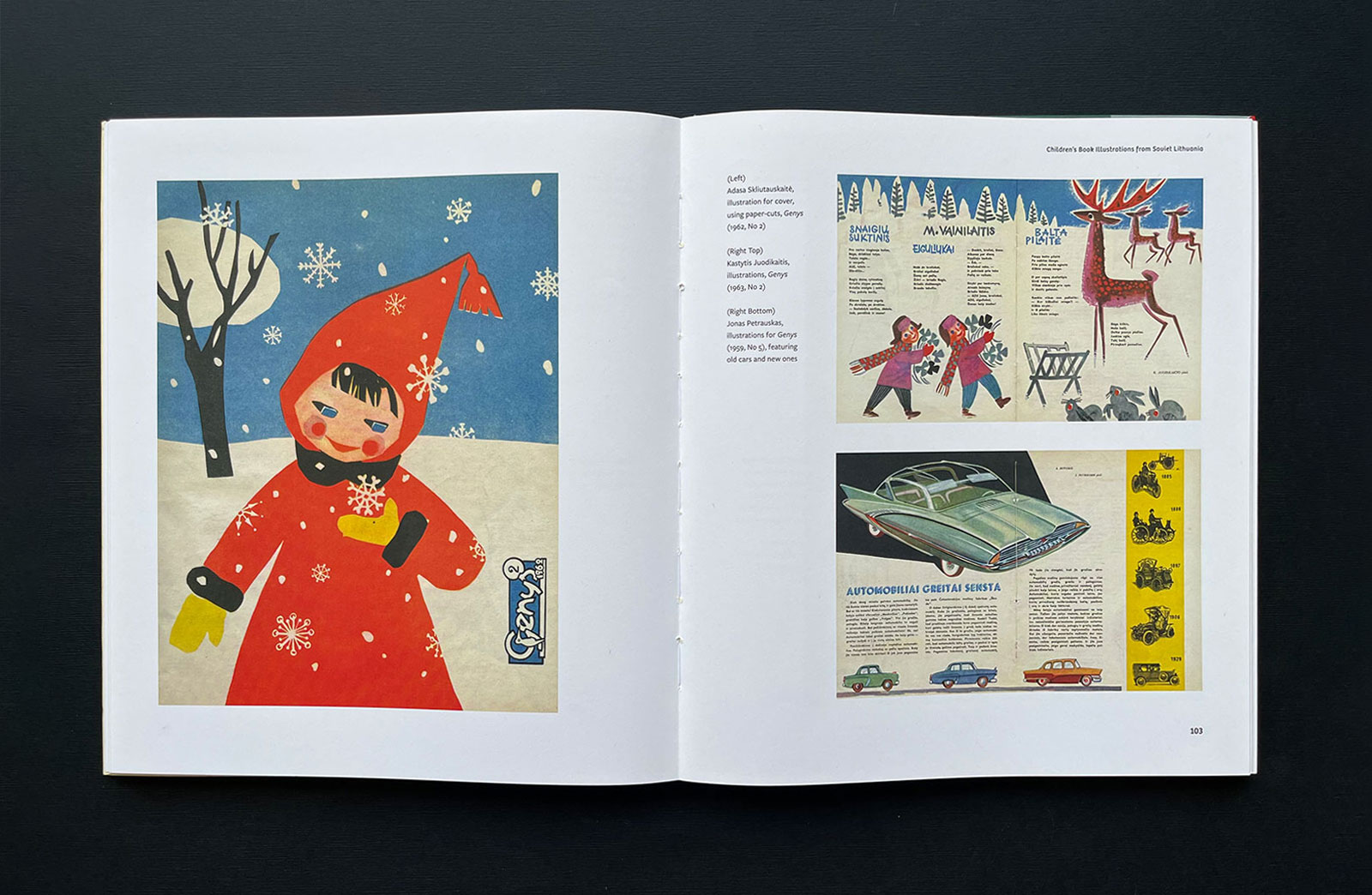
Illustrations by Lithuanian artists for Genys, a children’s magazine
Not many people perhaps remember that once there was a country called the Soviet Union. Its official name was Union of Soviet Socialist Republics (USSR)and Lithuania was one of these latter. Forcibly integrated into the Soviet state, it strove to retain its individual cultural life, but that did not always prove easy. In 1991, the Soviet Union was disinterred and its constituent republics emerged as individual nations. Independent Lithuania took a while to reckon with its troubled and often violent Soviet past, and one aspect of this reckoning, when it happened, had to do with children’s literature: among other things, this resulted in an exhibition of art from the children’s books published in the past, when Lithuania was a part of the USSR. The exhibition narrated a nuanced visual story of how Lithuanian publishers, artists and authors negotiated and creatively deflected the publishing diktats that were served by the USSR’s forbidding censorship policies.
Subsequently the exhibition travelled to India, and was on display at the Book Building, where Tara Books is housed. Indian readers had their own experience of children’s books created in the USSR. These were made available to them in English and other Indian languages at very modest prices, just as they were to readers in countries that had freed themselves from colonial rule in Asia and Africa. Those who were children in the 1970s remember these books with affection, and recall that they were charmed and inspired by the wonderful art that featured in them. And this was why we agreed to host the Lithuanian exhibition in the first place.
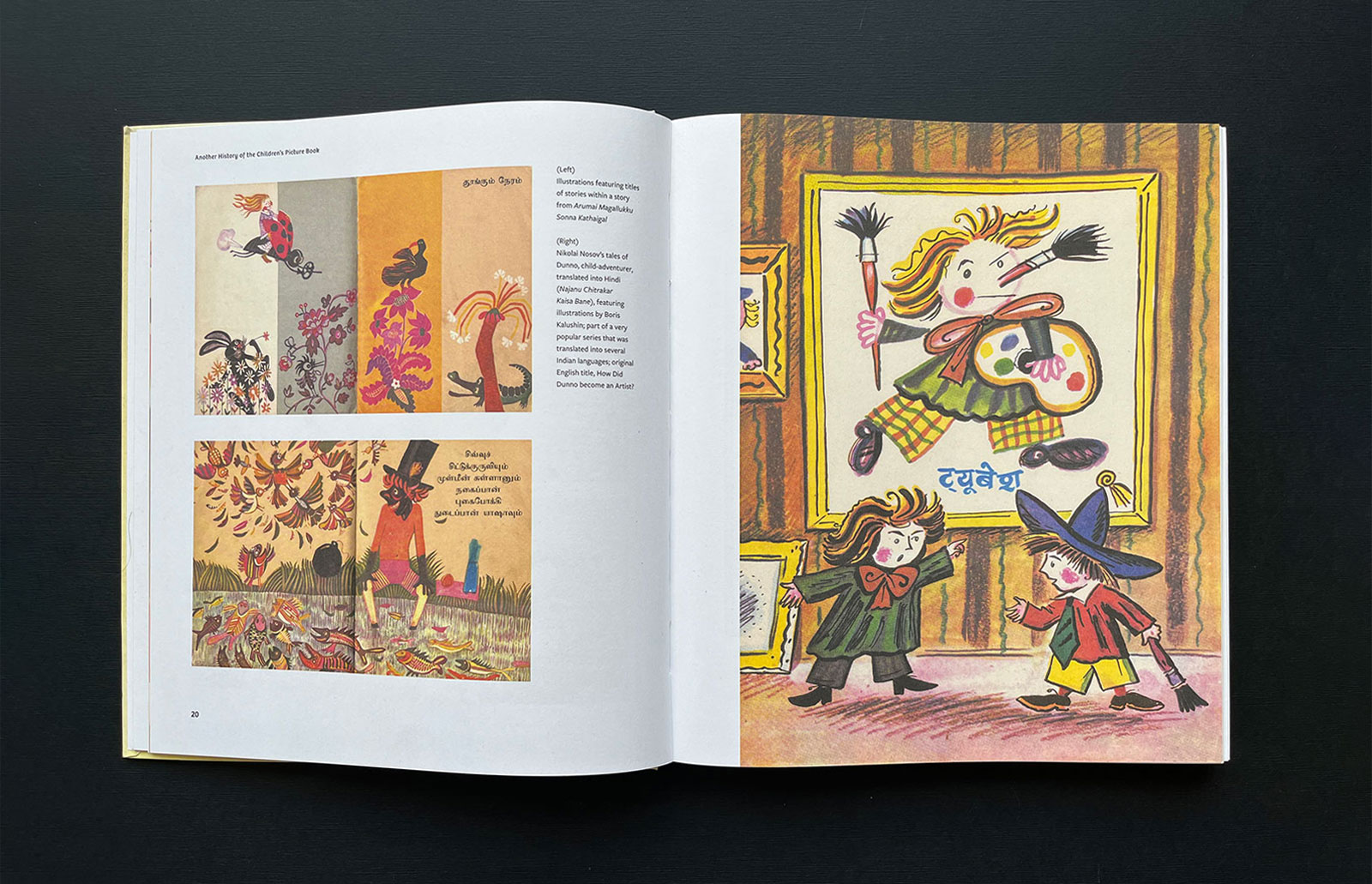
Illustrations for Tamil and Hindi translations of Soviet picture books, Tales for Alyonshka and Tales of Donno
Even as we worked on the exhibition at Tara Books, we expanded its content—we added an ‘India’ section that displayed pages from Soviet books translated into Indian languages. It proved quite a task to assemble these pages: we put out calls to Soviet book lovers on social media, reached out to individual bloggers, and asked friends to look out for books in private libraries … and we were overwhelmed by the enthusiastic support we received for the project. People scanned images, entire books in some cases and offered to look for more. An entire box of books arrived from a People’s Science library in nearby Pondicherry.
Meanwhile, we had decided to work closely with Giedrė Jankevičiūtė, Lithuanian scholar and curator of the original exhibition to come up with a book based on the exhibition but which also took into account the different ways in which books from the USSR had made their presence felt across the world. Eventually the book came to feature two histories, of publishing, reading and reception, a short one, that addressed the broader history of the Soviet children’s book world and its influence on Indian reading practices; and an in depth analysis of the ways in which Lithuanian publishers, along with artists and authors, created books in Soviet Lithuania.

Cover art for Trečias, a Lithuanian literary review (L) and Nemuno rankose, a poetry collection (R)
Another History turned out to be a rather pioneering title. Standard histories of children’s literature and publishing seldom take on board the massive publishing exercise carried out by the USSR. Unsurprisingly the book was taken note of by literary critics in central Europe and Russia: readers were both nostalgic and rueful about that time in their past. As a Russian reader of the book put it, we are sombre about our history, but reading how books from context travelled to and were relished by children in India makes us feel that the socialist publishing experiment was not all wrong. In that sense, for readers who have engaged with the book, it has proved a discovery of sorts.
Frida Folk
By Gaby Franger
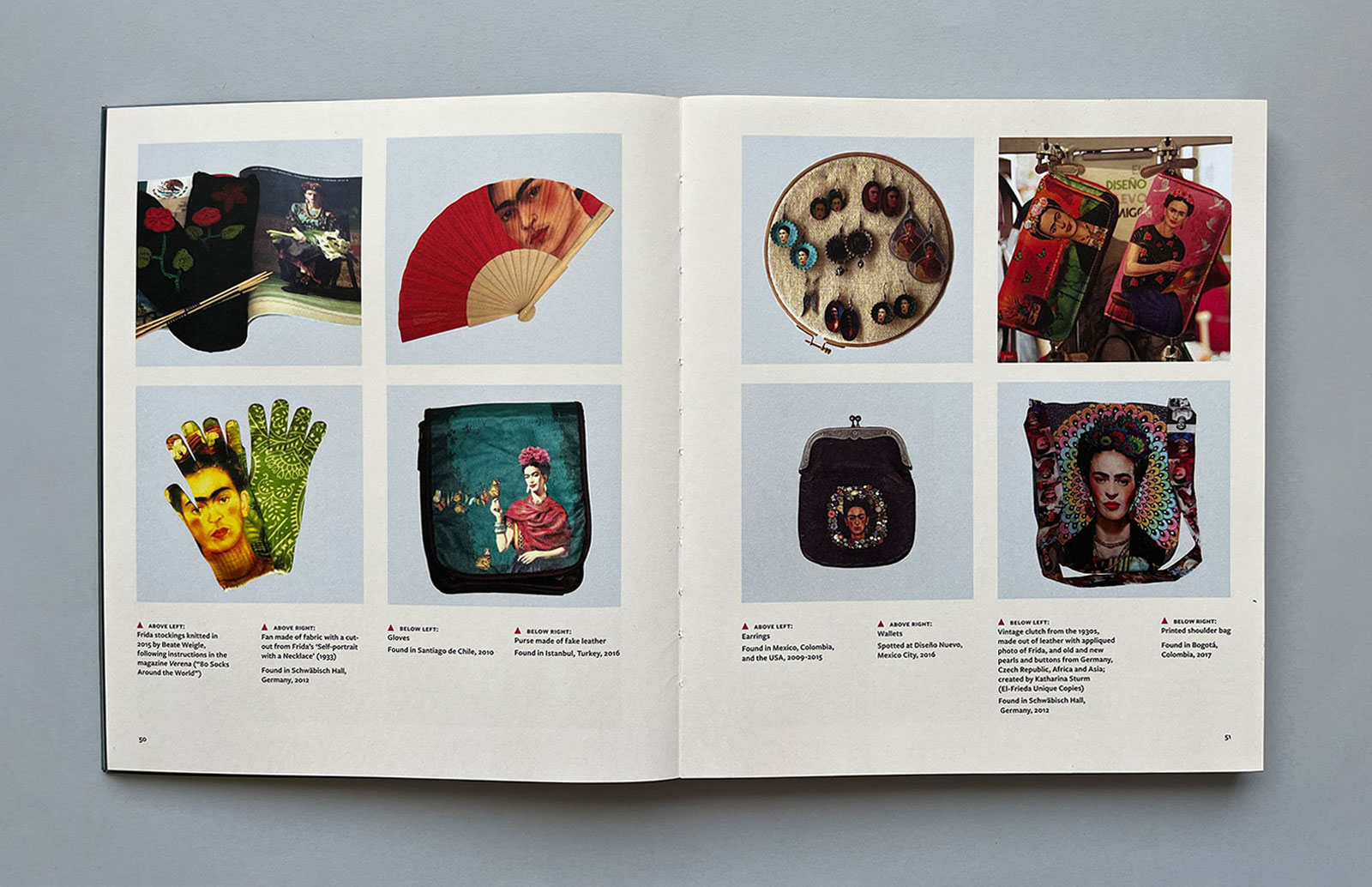
The adaptation of iconic images of Frida on popular accessories such as earrings, bags and gloves
Frida Folk is a book that actually is about two things: the life and times of Frida Kahlo, narrated in and through a terse combination of photos, text and images; and the ‘folk’ worlds that have kept her memory alive. As we know, she ‘took’ from folk traditions, and it is appropriate that the so-called ‘folk’ worlds have come to own her up in their own ways. Like that other well-known icon of Latin America, Che Guevara, Frida has come to symbolise complex aspirations, to do with identity, history, gender justice, revolution, mortality, healing… and artisans across the Latin world, and elsewhere as well, have made her art and life the subjects of their work.
Gaby Franger who has travelled in central and South America, often working with women’s groups in the region, had kept a keen eye out for these creations and over the years collected a range of Frida memorabilia. In Frida Folk, which features a part of her collection, she places each object in context, and in addition, locates the assemblage in the wider context of Mexican history. And so it seemed important to convey its complex content in both subtle and communicative ways. Franger also contextualises artisanal work and points to what particular set of events or influences shape an artisan’s response to Frida.
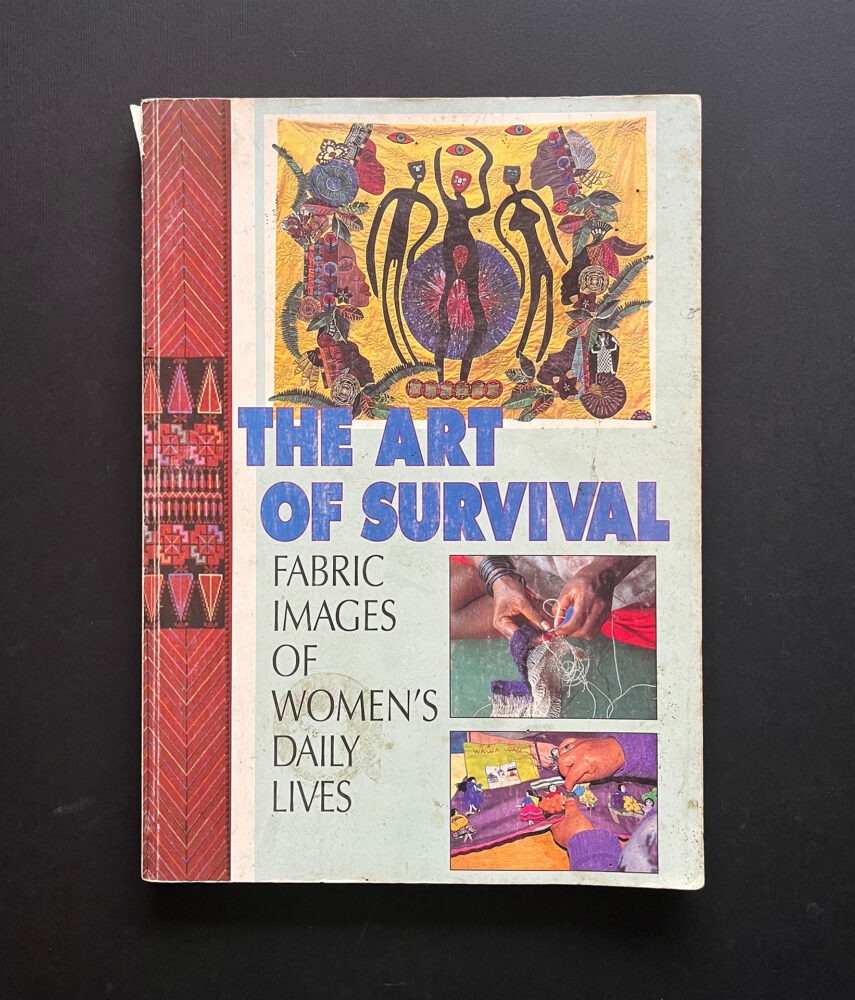
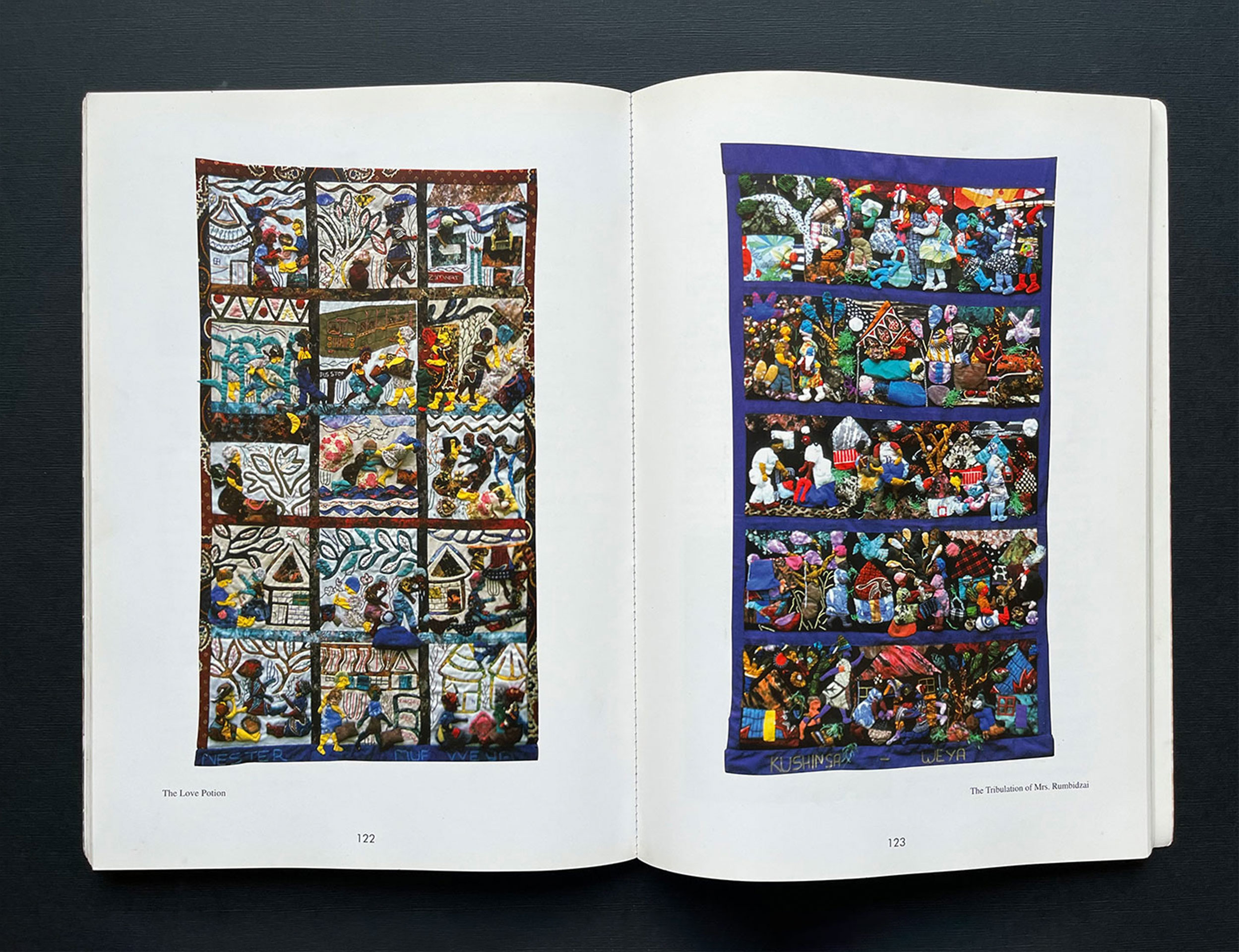
Quilts by the Runyange and Kushinga groups featured in The Art of Survival
Serendipitously enough, Frida Folk returned us to our very first book on the arts, and for which too we worked closely with Gaby Franger – The Art of Survival: Fabric Images of Women’s Daily Lives. Franger had worked closely with quilters from across the world, and put together a set of essays on the subject of quilting, based on conversations with and accounts of quilting in diverse contexts. She brought the project to Gita Wolf, who had earlier worked with her in an organisation called Women in One World. Gita had begun Tara Books just a year or so earlier (in 1995), and while she was looking to make children’s books, her feminism and long-standing interest in women’s art made her take on this manuscript. At that time Tara was barely three books old and this was a complex and singular publishing project!
We did not imagine that The Art of Survival would set us off on an unusual publishing journey. But clearly it did, and even if Frida Folk has not earned the attention it deserves, it is unlikely to be overlooked.
V. Geetha is a historian and translator and has been active in the women’s movement for over 3 decades. She has a special interest in pedagogy. Her work at Tara Books includes editing, writing, and working across different aspects of publishing to ensure that Tara’s publishing philosophy remains in focus, in all that they do.
Click here to discover Tara Books she has authored.



Margaret Robson Kett
Posted at 03:28h, 09 FebruaryI treasure my copy of Another History, bought at Bologna Children’s Book Fair in 2019.
Tara Books Team
Posted at 14:58h, 14 FebruaryGlad to hear that, Margaret. We’ll be at Bologna again this year, do drop by our stand if you’re attending!